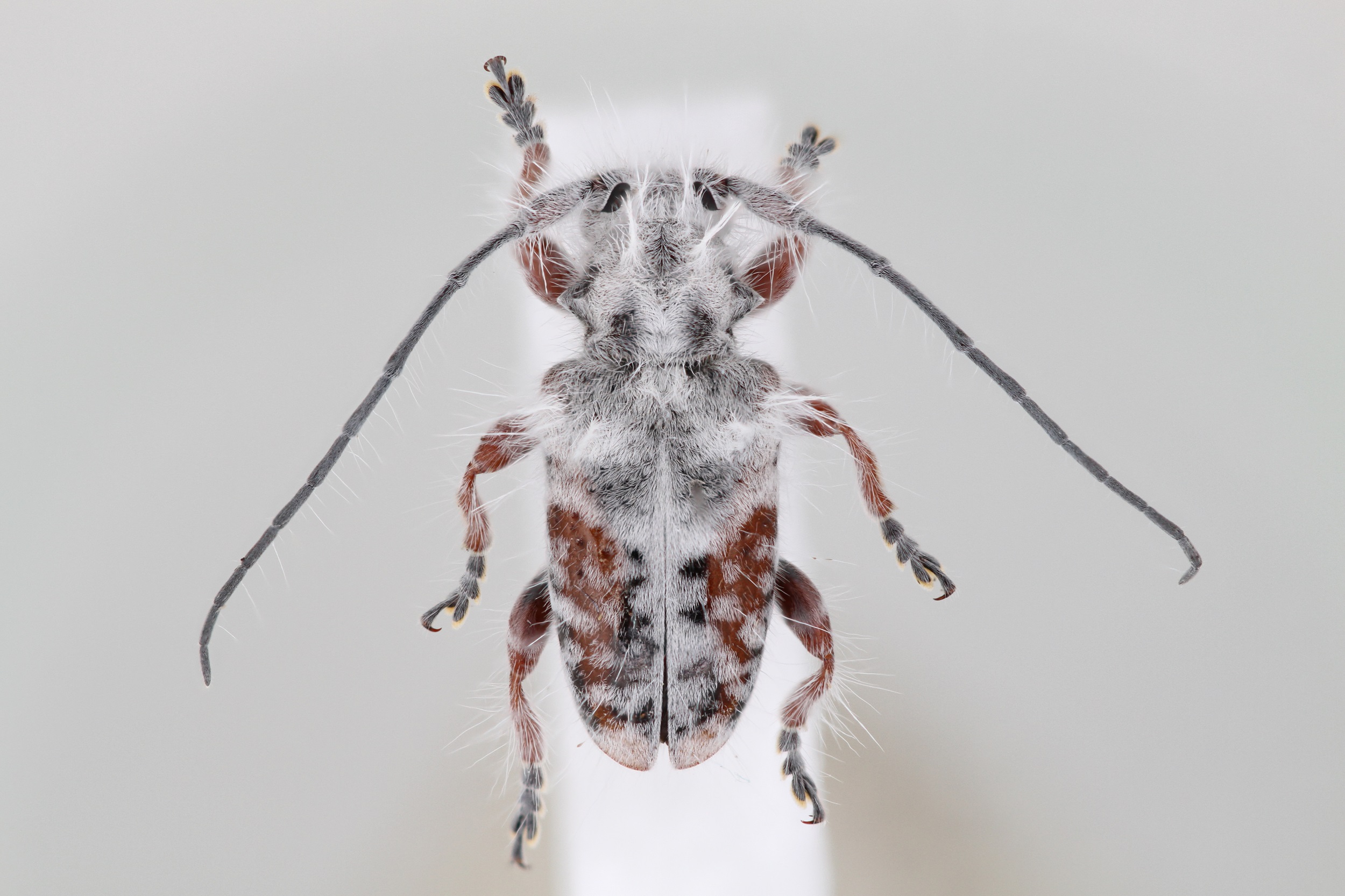In the bird-eat-bug world of Australia’s rainforests, a slightly better chance of survival is given to those who act tough or stay hidden. Alternatively, some opt to look so gross that even starving predators aren’t tempted to risk eating them. A brilliant example of this latter tactic has recently been found in the form of a punky Australian beetle that looks like a cross between bird crap and a fungi-infected corpse.
The kooky longhorn beetle was discovered by a team from the University of Queensland during a recent expedition to the rainforests of Australia’s Gold Coast. While the bug has since been identified as a new species, it very nearly remained undetected because the researchers briefly mistook it for bird poop.
“I was walking through the campsite at Binna Burra Lodge one morning and something on a Lomandra leaf caught my eye,” James Tweed, the PhD candidate at the University of Queensland who made the discovery, said in a statement.
“To my amazement, I saw the most extraordinary and fluffiest longhorn beetle I had ever seen. Measuring 9.7 millimetres [a little over 1/3 of an inch], it was a striking red and black beauty covered in long white hairs,” added Tweed.
Upon returning from the expedition, Tweed pored over scientific papers to see what species the beetle might belong to, but he couldn’t find a match. Seeking answers, he posted photographs of the mystery species to an Australasian beetle Facebook group. While the post gathered plenty of interest and fanfare, no one could identify the insect.
After getting into contact with the Australian National Insect Collection in Canberra, Tweed was finally able to confirm the beetle was a completely new species that even belonged to a new genus: Excastra albopilosa.
“We chose the name Excastra for the genus, which is Latin for ‘from the camp’, and for the species name, we decided on albopilosa which translates to ‘white and hairy’,” explained Tweed.

It’s official: Excastra albopilosa is a new species and genus of insect.
Image credit: Lingzi Zhou, Australian National Insect Collection
As for its unusual appearance, the researchers believe it might be an example of Batesian mimicry, an evolutionary “trick” used by harmless species to appear more dangerous than they actually are.
The fine white hairs that cover the beetle may have evolved to make the insect look like it’s been infected with a pathogenic fungus, making it an unappetizing sight for swooping birds.
“We don’t yet know what these hairs are for, but our primary theory is that they make the insect look like it’s been killed by an insect-killing fungus,” Tweed speculates.
“This would possibly deter predators such as birds from eating it, but until someone can find more specimens and study this species further, we won’t be able to say for sure why this beetle is so hairy,” he said.
The natural world has many inventive examples of Batesian mimicry. For instance, the greater mouse-eared bat makes a noise that sounds like the defensive buzzes of hornet wasps when barn owls enter their caves. Terrified of being stung, the owl will hear the noise and swiftly exit the bat’s home, unaware they have been duped.
The study is published in the Australian Journal of Taxonomy.
Source Link: New Species Of Punk Beetle Was Almost Mistaken For Bird Poop